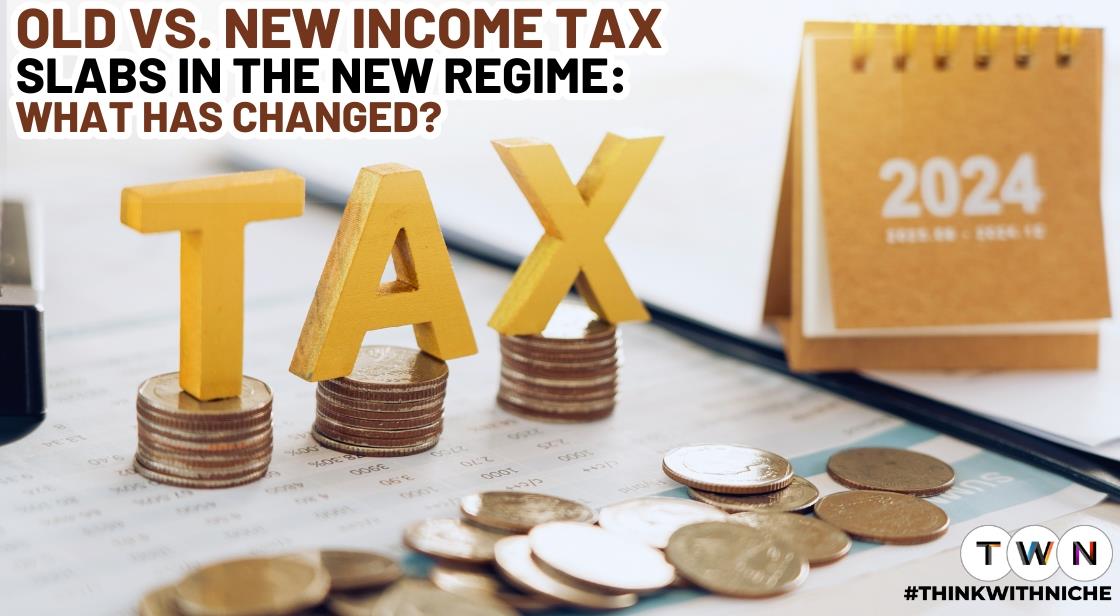Old vs. New Income Tax Slabs in the New Regime: What Has Changed

Blog Post
The revised income tax slabs introduced under the new tax regime have provided taxpayers with an additional option for managing their tax liabilities.
While the old regime allows for multiple exemptions and deductions, the new regime simplifies the process with lower tax rates but fewer deductions.
Understanding these changes is essential for making an informed decision that aligns with your financial goals, including strategies for managing long-term capital gains tax.
Old vs. New Income Tax Slabs in the New Regime: What Has Changed?
Overview of the old and new tax regimes
The old tax regime is well-known for offering a range of deductions and exemptions that can significantly reduce taxable income. These include investments and contributions under Section 80C, medical insurance premiums, and home loan interest, among others. While beneficial for those who utilise these options, the old regime can be complex and requires careful planning to optimise tax savings.
The new tax regime was introduced to simplify the tax system. It offers lower tax rates but removes most of the common deductions and exemptions. This approach aims to make the tax filing process more straightforward, appealing to individuals who prefer simplicity over detailed tax planning.
Detailed comparison of income tax slabs
Below is a breakdown of the income tax slabs under both regimes for the financial year 2024-25:
Old tax regime (with deductions and exemptions)
|
Income bracket (Rs.) |
Tax rate |
|
Up to 2.5 lakh |
No tax |
|
2.5 lakh – 5 lakh |
5% |
|
5 lakh – 10 lakh |
20% |
|
Above 10 lakh |
30% |
New tax regime (lower rates, fewer exemptions)
|
Income bracket (Rs.) |
Tax rate |
|
Up to 3 lakh |
No tax |
|
3 lakh – 6 lakh |
5% |
|
6 lakh – 9 lakh |
10% |
|
9 lakh – 12 lakh |
15% |
|
12 lakh – 15 lakh |
20% |
|
Above 15 lakh |
30% |
Key changes in the new regime
The new regime introduces several significant changes in terms of the income tax slabs aimed at simplifying tax calculations:
● Simplified structure: The new tax regime offers a straightforward, easy-to-understand tax structure, which appeals to those who prefer simplified filing.
● Lower tax rates: The tax rates under the new regime are generally lower than those of the old regime, providing immediate relief without needing deductions.
● Fewer exemptions: Unlike the old regime, the new tax regime eliminates most exemptions and deductions, including those under Section 80C for investments in provident funds, ELSS funds, and other savings instruments.
Impact on long-term capital gains tax
Choosing between the old and new tax regimes affects how income tax is calculated but does not impact the way long-term capital gains tax is applied. Gains from assets such as equity mutual funds and stocks are still subject to a 10% tax rate on amounts exceeding Rs. 1 lakh, regardless of the chosen regime. However, the overall tax planning strategy, including how you handle long-term capital gains, may need to be adjusted based on your selected regime.
Who should choose the old tax regime?
The old tax regime is ideal for taxpayers who can take full advantage of the available deductions and exemptions. Individuals who regularly invest in tax-saving instruments and have multiple eligible expenses may find this option more beneficial. Common deductions include:
● Investments under Section 80C: Contributions up to Rs. 1.5 lakh towards ELSS, PPF, EPF, and other qualifying instruments can reduce taxable income.
● Medical insurance premiums: Deductions under Section 80D for health insurance policies.
● Home loan interest: Deductible under Section 24, providing significant tax relief for homeowners.
Who should choose the new tax regime?
The new tax regime suits individuals who do not have significant deductions or prefer simplicity in tax filing. It can be more beneficial for:
- Young professionals: Those starting their careers who may not yet have large investments or expenses.
- Salaried individuals without tax-saving investments: People who prioritise liquidity and do not want to invest solely for tax benefits.
- Self-employed or high-income earners: Individuals who prefer straightforward calculation and lower tax rates without dealing with the complexities of claiming deductions.
Advantages of the new regime
- Ease of filing: With fewer calculations and less documentation required, the filing process becomes simpler.
- Immediate savings: The lower tax rates provide an opportunity for tax savings without the need for managing various investments.
How to decide which regime to choose
Evaluate deductions: Start by listing all potential deductions and exemptions you qualify for under the old regime. Use this to calculate your tax liability and compare it to the new regime.
Assess financial goals: If your financial strategy includes significant investments in tax-saving instruments or expenses like home loan interest, the old regime may offer better savings. For those prioritising simplicity or liquidity, the new regime could be more suitable.
Plan for long-term gains: While the long-term capital gains tax remains unaffected by your choice, consider how your overall tax strategy aligns with your investment plans.
Tax planning tips
Use a tax calculator: Online tools can help compare your tax liability under both regimes and determine which option suits you best.
Review financial goals regularly: Your choice of regime should align with your short-term and long-term financial objectives.
Consult with a financial advisor: A professional can provide tailored advice based on your income, deductions, and financial goals.
Conclusion
Choosing between the old and new income tax regimes requires careful consideration of your financial situation and long-term plans. The old tax regime offers more benefits for those who can utilise exemptions and deductions, while the new income tax slabs simplifies tax filing and provides immediate savings for those without significant deductions. Carefully assessing your financial profile and potential deductions can help you make the best decision for tax efficiency and long-term financial planning.
You May Like
EDITOR’S CHOICE












